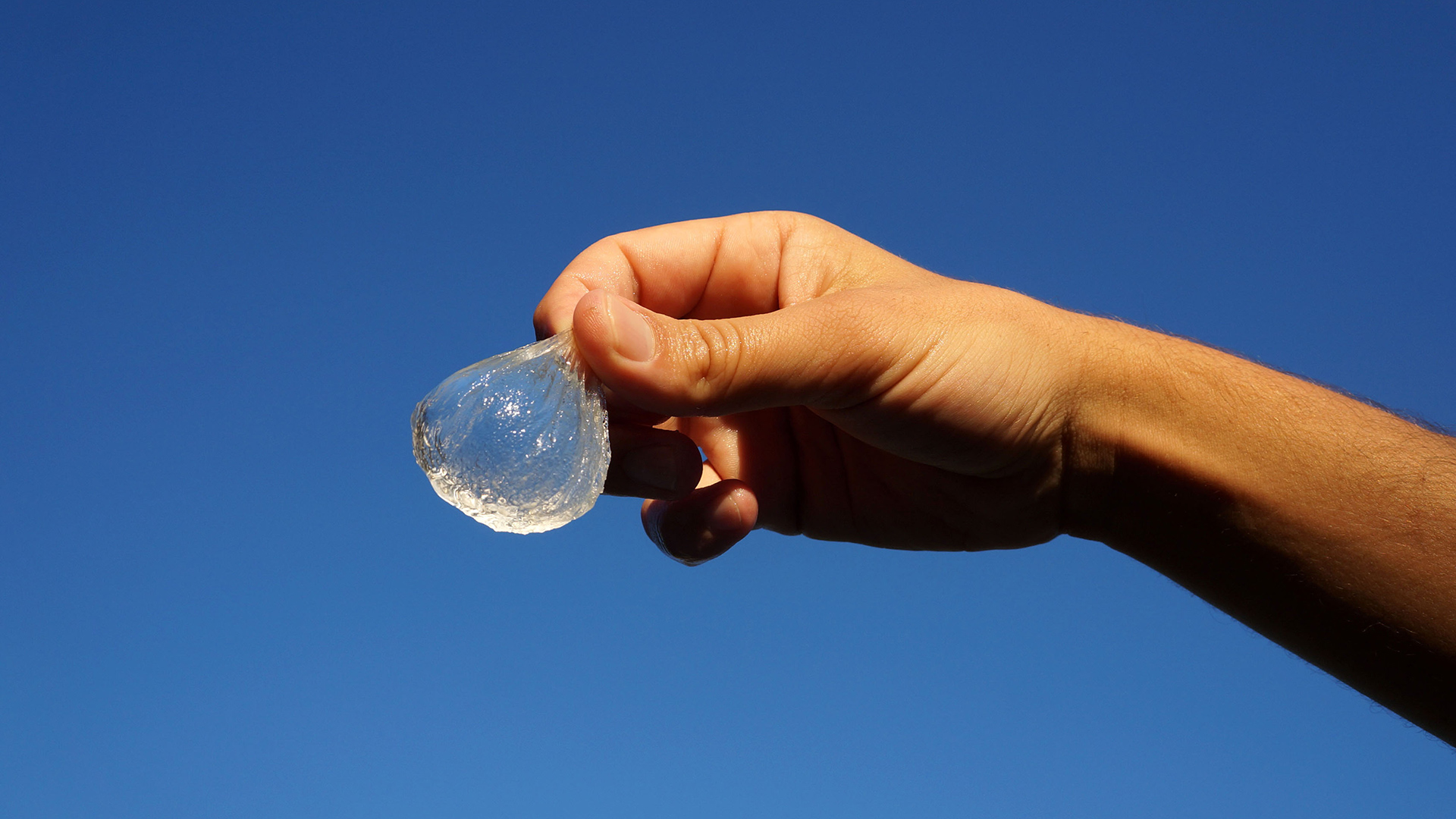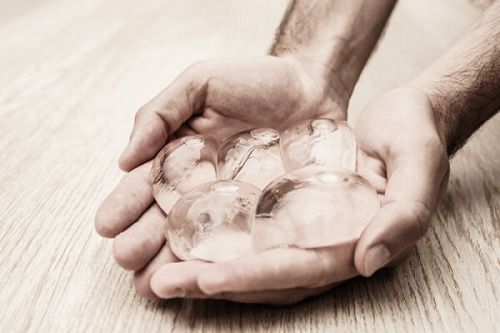Ooho Edible Water Bubble Aims
- Get link
- X
- Other Apps

The United States uses about 50 billion plastic water bottles each year, which requires 17 million barrels of oil. Sadly, less than a quarter of that plastic will get recycled. If you don’t want to be stuck carrying around a water bottle when you’re done taking a drink, why not just make a container you can eat?
Yuka Yoneda from Inhabitat gives a demonstration of how to do just that using a process called spherification, which creates a liquid with a soft membrane that you can eat. The process combines drinking water with sodium alginate, which comes from brown seaweed. After those two are combined, spoonfuls are put into a bath of calcium lactate, which is a salt that can be found in many items like baking powder, antacids, and cheese. Inside the bath, a gelatinous membrane begins to form, though the water stays liquid in the middle. The result is a refreshing drink of water that doesn’t require a separate vessel like a bottle or a cup
It is a well-known fact that plastic bottles, which take hundreds of years to decompose, are harmful to our environment. However, efforts by environmentalists to encourage consumers to switch to alternatives, like water fountains or reusable bottles, have not been very effective. The U.S. alone utilizes over 50 million plastic bottles annually, 80% of which end up in landfills.
To try to combat that, Rodrigo García González, Pierre Paslier, and Guillaume Couche from the Imperial College London have been working on an innovative solution — water encased inside an edible container made using seaweed. All the customer has to do to quench his/her thirst is poke a hole in the surface layer or, better still, pop the entire blob into the mouth.

The creators, who have been working on the Ooho bubble since 2014, use a simple two-step culinary process called spherification to create the ingenious container. They begin by immersing a frozen ball of water or juice into a calcium chloride solution. This helps form a gelatinous layer around the liquid. The ball is then soaked in a solution made from brown algae extract. This creates a second layer, helping reinforce the structure so that the water or juice does not leak. In addition to saving our environment, the biodegradable packaging costs just two cents each, making it cheaper to manufacture than plastic.
After three years of perfecting the design, the inventors, who recently raised over $1 million USD from a crowdfunding campaign, are ready to bring the Ooho bubble to market. However, there are a few challenges that still need to be overcome before it becomes a serious contender to plastic bottles.

In addition to getting accustomed to the texture of the tasteless covering, each edible container contains just a gulp of water, requiring consumers to drink multiple bubbles to quench their thirst. There is also the issue of finding an eco-friendly packaging to transport the bubbles so that they remain clean and do not burst. Finally, popping an Ooho bubble into the mouth is not the most elegant way to drink water or juice given that the liquid can splatter. Hopefully, the creators will find ways to combat the issues so that we can reduce, or perhaps even eliminate, plastic bottles.
- Get link
- X
- Other Apps
Popular posts from this blog
What is Muzo?
Using Billion Sound Technology (BST), the Muzo smart acoustic device attaches to any smooth surface and generates dynamic, realistic sounds, while promising to cancel vibration and outside noise. This way, the company claims that Muzo can turn almost anything into a crystal clear acoustic environment, including windows, walls, and desks and other furniture; improve the quality of your sleep, and even help protect your speech privacy. And it promises to do all of this over three steps: Position Muzo toward the noise and reposition if needed. Gently press the large button on the surface to select your ambient noise (or, use the noise-canceling technology by itself). Rotate the button to adjust soundtrack volume. Together, the company tells us that Muzo’s noise-blocking technology can create a “personal zone creator” that can work as an alternative to sleep aids and costly sound machines. Muzo sure sounds cool, but is it worth the money? Is it even a feasible con...
Pup Smart Scanner:
Using a scanner is usually not the most user-friendly experience you'll ever have. Since you'll have to find your scanner, which is probably under about 5 boxes. You then have to connect it to your computer, which the drivers are probably either not installed or out of date. Then you have to put each individual document you want to scan into the device and wait about 2 minutes each. The Pup is a super simple scanner that works just like a camera, and takes just seconds to scan each item you want digitized. How it works is, you select the settings beforehand on how you'd like to scan it, and what you'd like to do with it once it's scanned, then you hold the Pup Smart Scanner above what you'd like to scan, and lasers will square off and show you exactly what you're about to scan. Then just press the button to initiate the scan, and a flash will illuminate the document, and it will scan it within seconds. Perfect for keeping your child's dr...
Comments
Post a Comment